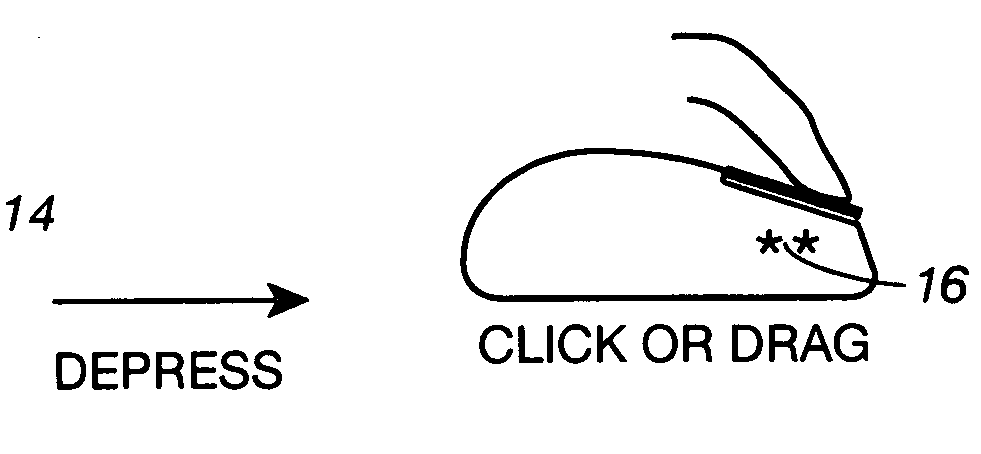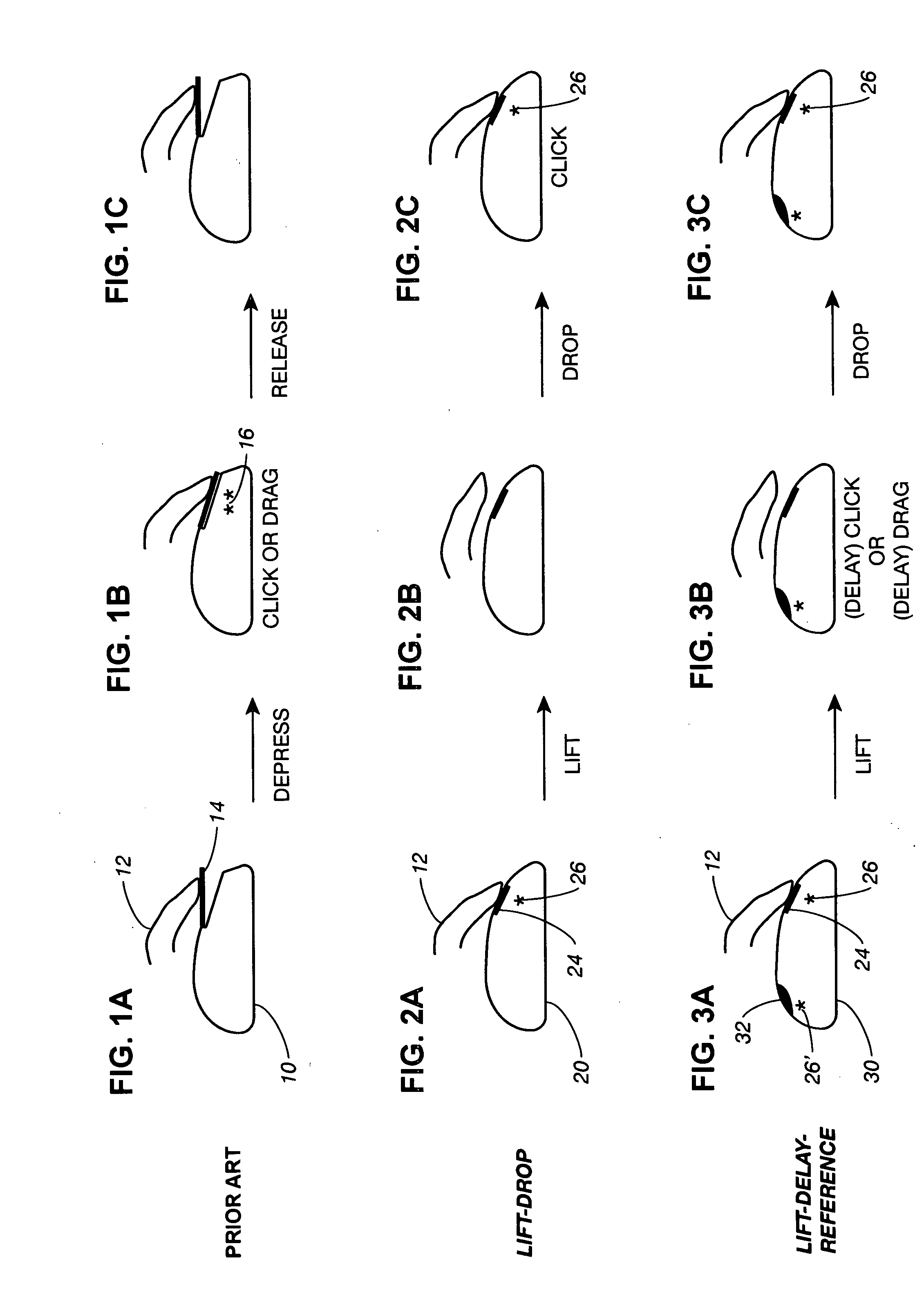Ergonomic lift-clicking method and apparatus for actuating home switches on computer input devices
a home switch and lift-clicking technology, applied in the computer field, can solve the problems of many different kinds of discomfort, strain, and damage to the hand and wrist, and avoid the movement of the pointing device, so as to achieve the effect of reducing the risk of injury
- Summary
- Abstract
- Description
- Claims
- Application Information
AI Technical Summary
Problems solved by technology
Method used
Image
Examples
Embodiment Construction
is a horizontal mouse utilizing single stage lift-clicking. FIG. 33A is a top view of this embodiment (948), showing left and right home touch surfaces of light touch lift type of switches / sensor zones 950L and 950R that are home resting locations for the index and middle fingers for use in lift-drop, lift-delay, hybrid and momentary lifted modes, optional rear momentary touch switches 952L and 952R, possible hand presence reference sensor zones (dashed line ovals 954L, 954R, 954C) that can serve as home resting locations for the thumb, ring or little finger and palm, and scroll device 956. This embodiment incorporates any type of prior art XY horizontal motion encoder 949 (see side view cross-section FIG. 33C) in its underside for cursor tracking of horizontal position of the mouse on the desktop / worksurface. This embodiment could have a shape and proportions different from the illustration in FIG. 33A, and need not be bilaterally symmetrical as shown, but separate models could be ...
PUM
 Login to View More
Login to View More Abstract
Description
Claims
Application Information
 Login to View More
Login to View More - R&D
- Intellectual Property
- Life Sciences
- Materials
- Tech Scout
- Unparalleled Data Quality
- Higher Quality Content
- 60% Fewer Hallucinations
Browse by: Latest US Patents, China's latest patents, Technical Efficacy Thesaurus, Application Domain, Technology Topic, Popular Technical Reports.
© 2025 PatSnap. All rights reserved.Legal|Privacy policy|Modern Slavery Act Transparency Statement|Sitemap|About US| Contact US: help@patsnap.com



